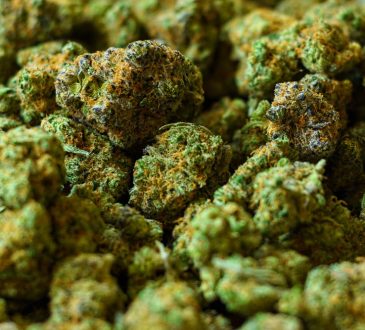
In the realm of muscle recovery and therapy, few treatments are as revered as the ice bath. Often associated with elite athletes and professional sports teams, the concept of submerging oneself in icy water might seem daunting to the average person.
However, with the rise of home wellness trends and the increasing accessibility of equipment for luxury home gym equipment, more individuals are considering the feasibility of installing an ice bath in their own homes.
In this comprehensive guide, we’ll explore the feasibility, benefits, and considerations of installing an ice bath at home, and delve into how it aids in muscle therapy.
What are ice bath?
Ice baths, also known as cold water immersion or cryotherapy, are therapeutic practices involving the immersion of the body, typically up to the chest or neck, in a tub filled with cold water, often supplemented with ice cubes or ice packs to lower the water temperature significantly.
It is a treatment widely used in sports medicine and physical therapy settings to aid in muscle recovery and alleviates soreness following intense physical activity.
The concept behind ice baths lies in the application of cold temperature to induce various physiological responses in the body, ultimately promoting healing and reducing inflammation.
Benefits of Ice Baths for Muscle Therapy
Let’s delve into the science behind this age-old practice and uncover the manifold benefits it brings to muscle recovery and overall well-being.
Reduced Inflammation
One of the primary reasons athletes turn to ice baths is their ability to reduce inflammation. Intense physical activity can lead to micro-tears in muscle fibers, causing inflammation and soreness.
Cold therapy, such as immersion in an ice bath, constricts blood vessels, thereby decreasing blood flow to the affected muscles.
This reduction in blood flow helps alleviate swelling and inflammation, providing much-needed relief to tired muscles.
Faster Muscle Recovery
Ice baths are renowned for their ability to expedite the muscle recovery process. By constricting blood vessels and reducing inflammation, cold therapy helps flush out metabolic waste products such as lactic acid that accumulate during exercise.
This flushing action promotes quicker recovery by facilitating the delivery of oxygen-rich blood to the muscles, thereby speeding up the repair of damaged tissue.
Consequently, athletes who incorporate ice baths into their recovery routine often experience less downtime between training sessions and competitions.
Pain Relief
The numbing effect of cold water can provide immediate pain relief to achy muscles. When immersed in an ice bath, the cold temperature dulls the sensation of pain by numbing nerve endings in the skin and underlying tissues.
This temporary analgesic effect can be particularly beneficial for athletes recovering from intense workouts or individuals managing chronic muscle pain.
Furthermore, the release of endorphins triggered by the cold exposure can enhance feelings of well-being and reduce the perception of discomfort.
Enhanced Athletic Performance
In addition to promoting recovery, ice baths have been linked to improved athletic performance. By reducing inflammation and soreness, athletes can maintain peak physical condition and train at a higher intensity without succumbing to overuse injuries.
Furthermore, the invigorating effect of cold therapy can help rejuvenate fatigued muscles, allowing athletes to bounce back stronger for their next workout or competition.
Over time, incorporating ice baths into a comprehensive training regimen can contribute to long-term gains in strength, endurance, and overall performance.
Mental Refreshment
Beyond its physiological benefits, the ritual of taking an ice bath can offer mental refreshment and rejuvenation.
The shock of cold water against the skin stimulates the release of adrenaline and activates the body’s natural stress response, inducing a state of alertness and heightened focus.
Many athletes find that the mental fortitude required to endure the discomfort of an ice bath translates into increased resilience and mental toughness on the field or court.
Moreover, the meditative nature of immersing oneself in icy waters provides an opportunity for introspection and mental clarity, helping athletes recharge both body and mind.
How ice bath help with my muscle therapy
Let’s embark on a deeper exploration of how ice baths contribute to muscle therapy and recovery, uncovering the physiological mechanisms and long-term effects that make them a valuable asset in the athlete’s toolkit.
1.Inflammatory Modulation at the Cellular Level
Ice baths exert their anti-inflammatory effects by modulating cellular responses to stress and trauma. Cold exposure triggers the release of cytokines, such as interleukin-10, which possess potent anti-inflammatory properties.
By dampening the inflammatory cascade, ice baths mitigate tissue damage and promote efficient muscle repair.
2. Optimization of Muscle Microcirculation
Beyond the initial vasoconstriction induced by cold water immersion, subsequent rewarming prompts vasodilation and enhances microcirculation within the muscles.
Improved blood flow facilitates the delivery of oxygen, nutrients, and immune cells to the injured tissues, expediting the healing process and reducing recovery time.
3. Balancing the Yin and Yang of Muscle Recovery
Ice baths strike a delicate balance between the opposing forces of inflammation and repair, crucial for optimal muscle recovery.
While acute inflammation is a natural response to exercise-induced stress, excessive or prolonged inflammation can impede the healing process.
Ice baths act as a countermeasure, attenuating excessive inflammation while preserving the reparative mechanisms necessary for tissue regeneration.
4. Hormonal Regulation and Neurotransmitter Modulation
Cold exposure triggers a complex interplay of hormonal responses and neurotransmitter modulation, influencing the body’s stress response and pain perception.
The release of hormones like adrenaline and noradrenaline heightens alertness and arousal, while the activation of opioid receptors induces analgesia and promotes a sense of well-being, easing the discomfort associated with intense physical exertion.
5. Epigenetic Adaptations and Long-Term Resilience
Regular exposure to cold stress, such as that experienced during ice baths, can induce epigenetic adaptations that confer long-term resilience to physiological stressors.
These adaptations may include upregulation of stress-responsive genes, enhanced mitochondrial biogenesis, and improved cellular antioxidant defenses, collectively enhancing the body’s capacity to withstand and recover from strenuous exercise.
6. Psychological Rejuvenation and Mental Toughness
Enduring the intense cold of an ice bath fosters psychological resilience and mental toughness, qualities essential for success in sports and physical endeavors.
By confronting discomfort and embracing discomfort, athletes cultivate a mindset of perseverance and resilience that transcends the confines of the ice bath, permeating all aspects of their athletic journey.
7. Integration with Holistic Recovery Practices
Ice baths are most effective when integrated into a holistic approach to recovery, complementing other modalities such as massage, compression therapy, and nutrition.
By synergizing with these practices, ice baths amplify their efficacy and provide a multifaceted approach to muscle therapy and regeneration.
8. Individual Variability and Personalized Recovery Protocols
Recognizing the inherent variability in individual responses to cold exposure, personalized ice bath protocols can optimize outcomes and minimize adverse reactions.
Factors such as body composition, fitness level, and genetic predisposition influence an individual’s tolerance to cold, necessitating tailored approaches to ice bath therapy.
Environmental Considerations and Sustainability
While ice baths offer undeniable benefits, considerations regarding environmental impact and sustainability cannot be overlooked.
Innovations in ice bath technology, such as energy-efficient cooling systems and water recycling mechanisms, are crucial for minimizing resource consumption and mitigating ecological footprint.
Considerations for Installing an Ice Bath at Home
Whether you’re an athlete looking to speed up recovery or simply someone wanting to boost overall well-being, installing an ice bath at home can be an excellent investment.
However, before you plunge into this icy world, there are several important considerations to keep in mind.
1. Space Requirements:
The first thing to consider is the space available for your ice bath setup. Ice baths typically come in various sizes, from small tubs to larger containers, depending on your needs.
Measure the area where you plan to install the ice bath to ensure it fits comfortably and allows for easy access.
2. Budget:
Installing an ice bath at home can range from a simple DIY setup to a more elaborate professional installation. Consider your budget and how much you’re willing to invest in this cold therapy experience.
Costs may include the price of the tub or container, installation fees (if applicable), ongoing maintenance, and the expense of purchasing ice or a cooling system.
3. DIY vs. Professional Installation:
Decide whether you want to take the DIY route or hire professionals to install your ice bath. DIY options can be more cost-effective but may require some technical know-how and effort on your part.
On the other hand, professional installation ensures a properly designed and safe setup but may come with a higher price tag.
4. Material and Insulation:
Ice baths are typically made of materials like plastic, fiberglass, or stainless steel. Consider the durability and insulation properties of the material when making your selection.
Stainless steel, for example, is known for its strength and ability to retain cold temperatures, making it a popular choice among many users.
5. Temperature Control:
Maintaining the ideal temperature is crucial for an effective ice bath experience. Some ice baths come with built-in temperature control systems, while others require manual monitoring and adjustment.
Consider whether you prefer a hands-on approach or the convenience of automated temperature control when selecting your ice bath setup.
6. Accessibility and Safety:
Ensure that your ice bath setup is easily accessible and safe to use. This includes factors such as sturdy handrails or steps for getting in and out of the bath, non-slip surfaces to prevent accidents, and proper insulation to avoid frostbite or other cold-related injuries.
7. Maintenance:
Like any other home appliance or fixture, ice baths require regular maintenance to ensure optimal performance and longevity.
This may include cleaning the tub, inspecting for leaks or damage, and replacing worn-out components as needed.
Consider the maintenance requirements of your chosen ice bath setup and factor them into your decision-making process.
8. Health Considerations:
While ice baths considered as a sustainable gym equipment and it offer numerous benefits, they may not be suitable for everyone. Individuals with certain medical conditions, such as heart problems or circulation issues, should consult with a healthcare professional before using an ice bath.
Additionally, pregnant women and those with skin conditions or sensitivity to cold should exercise caution or avoid ice baths altogether.
9. Alternatives:
If installing an ice bath at home isn’t feasible or practical for you, there are alternative options for cold therapy.
These include cold showers, ice packs, cryotherapy chambers, or even natural bodies of water such as lakes or rivers (with caution and supervision).
Explore these alternatives to find the cold therapy method that best suits your preferences and lifestyle.
Conclusion
While installing a luxury ice bath at home requires careful consideration and planning, the benefits it offers for muscle therapy are undeniable.
From reducing inflammation and soreness to promoting muscle repair and enhancing circulation, ice baths are a valuable tool for accelerating recovery and optimizing performance.
By understanding the fundamentals of ice baths and addressing logistical considerations, individuals can harness the power of cold water immersion in the comfort of their own homes, unlocking the potential for enhanced physical well-being and vitality.




